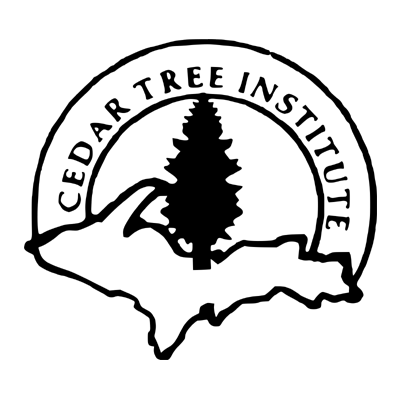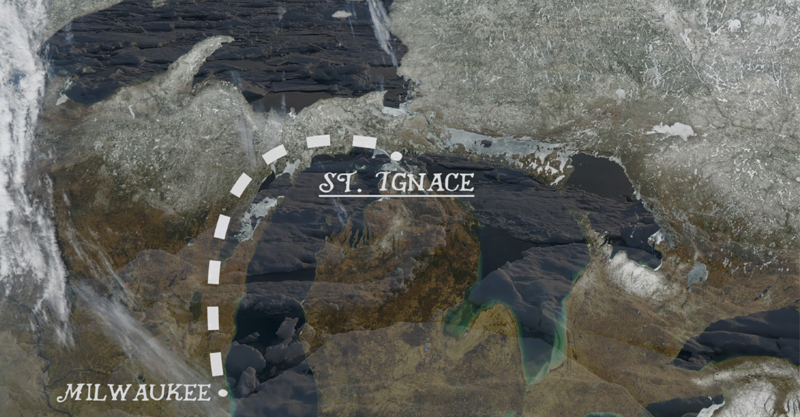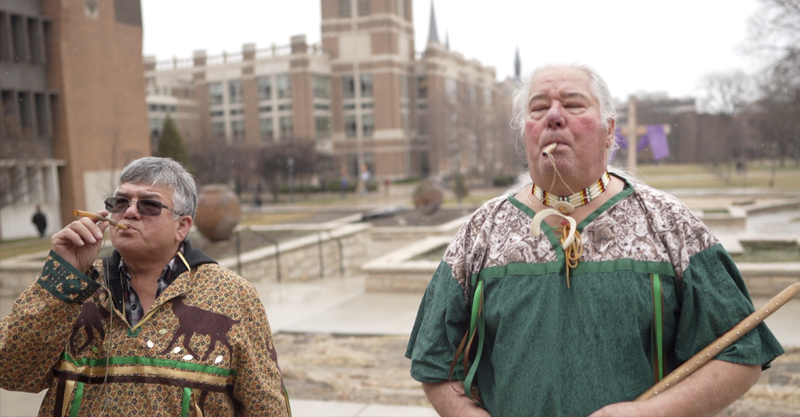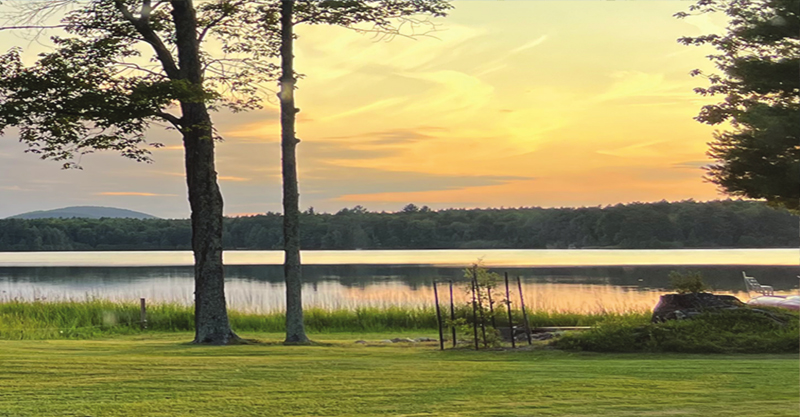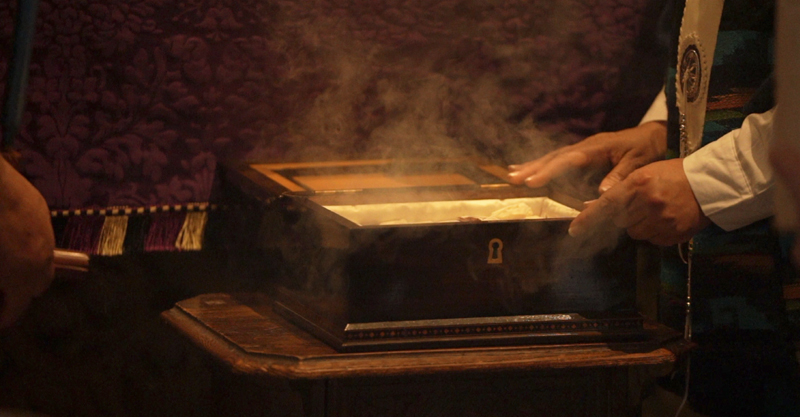*This article, written by Jon Magnuson, was published in the Marquette Monthly May, 2022
The Return
In the spring of 1675 on a late afternoon, a lone birchbark canoe with three travelers approached the mouth of a river on the shores of Lake Michigan, near what is now the town of Ludington, ninety miles south of the Straits of Mackinaw.
Two Native Americans and a Frenchman landed their craft on a remote beach and built a small fire. They quickly constructed a makeshift shelter for the night from branches and bark.
Although no documentation identifies them by name, two of the travelers are believed to have been of mixed tribal descent. The Frenchman was Jacques Marquette, a 38-year-old Jesuit priest and explorer.
That evening, after suffering from previous days of weakness and dysentery, he died at the edge of the forest and water, surrounded by prayers from his two companions. The next morning, he was buried there, at a place that came to be known for years following a “River of the Blackrobe.”
Jesuits, in those times, universally wore simple black wool robes across North America as signs of modesty and service. At the time of his death, Father Marquette, under a request of his superiors, had recently completed mapping and exploring the Mississippi Valley with Loius Jolliet, a commissioned French-Canadian explorer from Quebec. That spring, Jolliet returned to Montreal. Marquette was on his way back to St. Ignace, the place he had come to call home.
Two years later, in June of 1677, members of the Native community in St. Ignace traveled to his burial place. They retrieved his remains, cleansed the bones as was their tradition, and carried them by canoe north to the mission he had founded in 1671.
Thirty canoes of Huron, Ojibway, Odawa, Potawatomi and Iroquois tribal members accompanied the delegation as they landed at the bay in St. Ignace. Marquette was buried there beneath a simple altar in the Mission chapel on the Monday after Pentecost, framed by sounds of drums, prayers and rituals of a traditional indigenous pipe ceremony.

Two hundred years passed. During that time, the mission was abandoned. As all cities and villages subsequently come to be, the Village of St. Ignace was rebuilt and transformed. Then, in 1877, Peter Grondin, a Native American employee of a local businessman, discovered the site of the Mission during an excavation project. Under what remained of the rudimentary altar’s foundation, he found a box of nineteen bones, preserved in a double-walled birchbark box.
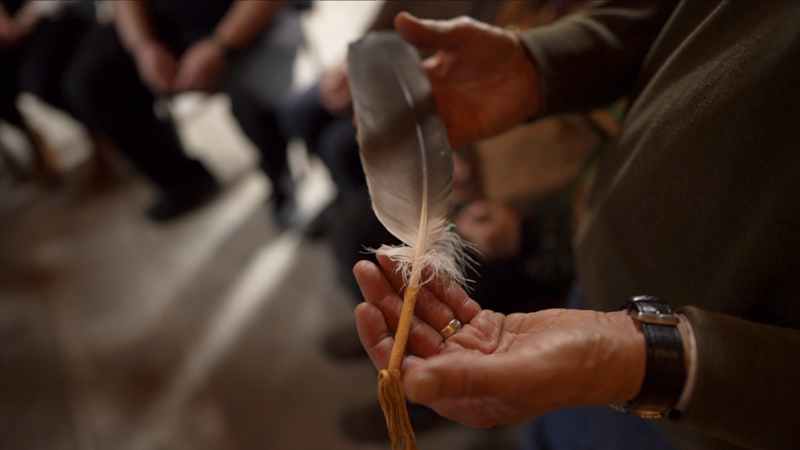
For 145 years, they have been missing. Now under the care of Marquette University in Milwaukee, Jacques Marquette’s bones will be officially presented this spring to a small delegation of Native peoples from St. Ignace and the Museum of Ojibway Culture. Seventy-two-year-old Tony Grondin, tribal elder and great-great-great grandson of Peter Grondin, will be present. He will be carrying an eagle feather and ceremonial pipe.
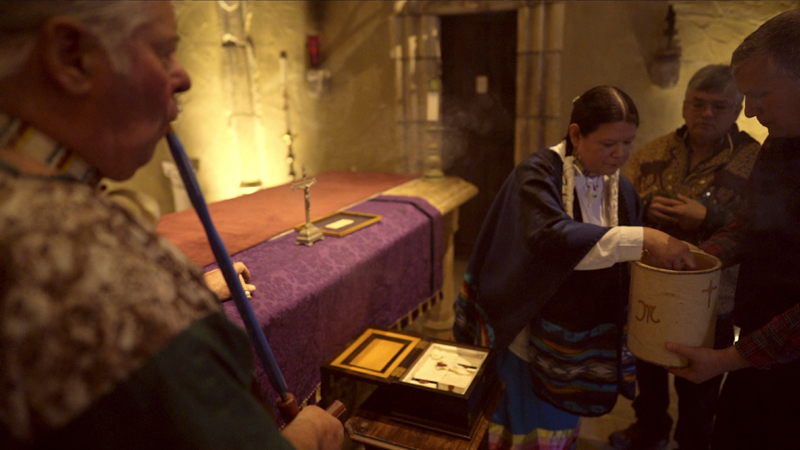
Jesuit legacy in New France
In the 17th century, 46 French Jesuit priests were commissioned to travel to “New France” – what is now Canada and our nation’s Northeastern States. The Jesuits first arrived in Quebec and Montreal where they underwent extensive training in indigenous languages.
They were taught practical skills about how to live with harsh weather, how to survive midst the dense, forbidding forest of a strange, new country. They were also specifically instructed how to show respect when carrying through their religious obligations, how to find common ground with Native American peoples and their cultures.

Jacques Marquette was among them. Born near Laon, France, he was cross-trained as a map maker, navigator and historian. He’s credited as founding the first European settlement in the Great Lakes Basin at Sault Ste. Marie in 1669. Two years later, he established the Mission at St. Ignace which he came to regard as his home.
Like all social movements and institutional projects of their times, history shows us such initiatives inevitably leave mixed legacies: ethnocentricity, misplaced intention, self-interest. Yet, given that, Jacques Marquette left behind an example of someone who, though steeped in limits of his own religious convictions, opened his mind and heart to a deeper vision of shared values. He held strong convictions about the integrity of cultures, personally embodied a strong, unusual spirit of adventure. His life reflected A devotion to a larger common good.
As the French and English fur industry was established as a lucrative commercial enterprise in New France, Native Americans were exploited and manipulated in commercial transaction. Alcohol was provided. Freely. Records document that frequent fist fights and murders constellated around such matters. The Jesuits in the New World, having taken vows of poverty, were especially sensitive about these issues. They were often despised by fur traders and government officials because of their position as fierce advocates. They demanded Native peoples be treated fairly.

Prayer, sage, a ceremonial pipe
Yet, a question can, and should be raised: Why would Native American people welcome back the remains of a zhaganosh (Anishinaabe for “white man”), now that recent history had documented the devastating results from the loss of indigenous culture and traditional belief?
“Our oral tradition has passed down the story, over hundreds of years, that Father Marquette was beloved by our tribal community,” said Francie (Moses) Wyers, cultural teacher for St. Ignace’s Museum of Ojibwa Culture. “That he lived among us, shared our life together, respected our teachings. He cared for our people.”
Grondin, elder of the Sault Ste. Marie Tribe of Chippewa Indians shares similar convictions.
“Jacques Marquette came and lived among us. He was given by our people the honor of being a sacred pipe carrier,” he said. “for us, this has always been a sign of respect and honor. It means that such a person shares our values, understands and respects our spiritual teachings. His memory lives on among us as one who showed kindness, fought to protect our tribal communities.”
Grondin said while following his own faith and mission, Father Marquette honored and practiced many Native spiritual traditions.
“On behalf of Native peoples of this community, Russ Rickley, one of our tribal members and caretaker of our Indian cemetery, will kneel with us to place his bones back into Mother Earth,” Grondin said. Here at the site of the old St. Ignace mission is where Father Marquette longed to be buried. This is where, surrounded by prayers, the scent of sage, a ceremonial pipe and songs from a sacred Anishinaabe drum, we will welcome him back.”
Shirley Sorrells, director of the Museum of Ojibwa Culture in St. Ignace, is coordinating logistics with here staff and city leaders for the forthcoming transfer and reburial.
“Our community is preparing for an extraordinary time of remembrance and healing,” Sorrells said.
Marquette’s bones will be formally buried at the original gravesite in St. Ignace by descendants of tribal peoples he lived among. The occasion will be shaped by prayers and a feat of commemoration highlighting Native American and French-Canadian foods. Representatives form the Jewish, Buddhist, Christian and “Three Fires” (Ojibway, Odawa and Potawatomi) indigenous spiritual traditions will be present. On that day, for a single moment, time will stop in the small Village of St. Ignace.
At 1 p.m. on June 18, the reburial of Jacques Marquette’s remains will take place in the courtyard of the Museum of Ojibwa Culture in St. Ignace. The public is cordially invited.
This one-time effort is being supported by gifts form individuals of all walks of life. Donors will be acknowledged on a modest plaque. It’s hoped that, as years pass, visitors will find encouragement in this story of reconciliation and healing between cultures.
To make a contribution, visit www.cedartreeinstitute.org/the-return/ by May 15.
For details on the day’s events, visit www.museumofojibwaculture.net.
–
Jon Magnuson
The Cedar Tree Institute
The writer is Director of The Cedar Tree Institute, a nonprofit organization, based in Michigan, that initiates projects and provides services in the areas of mental health, religion, and the environment.
